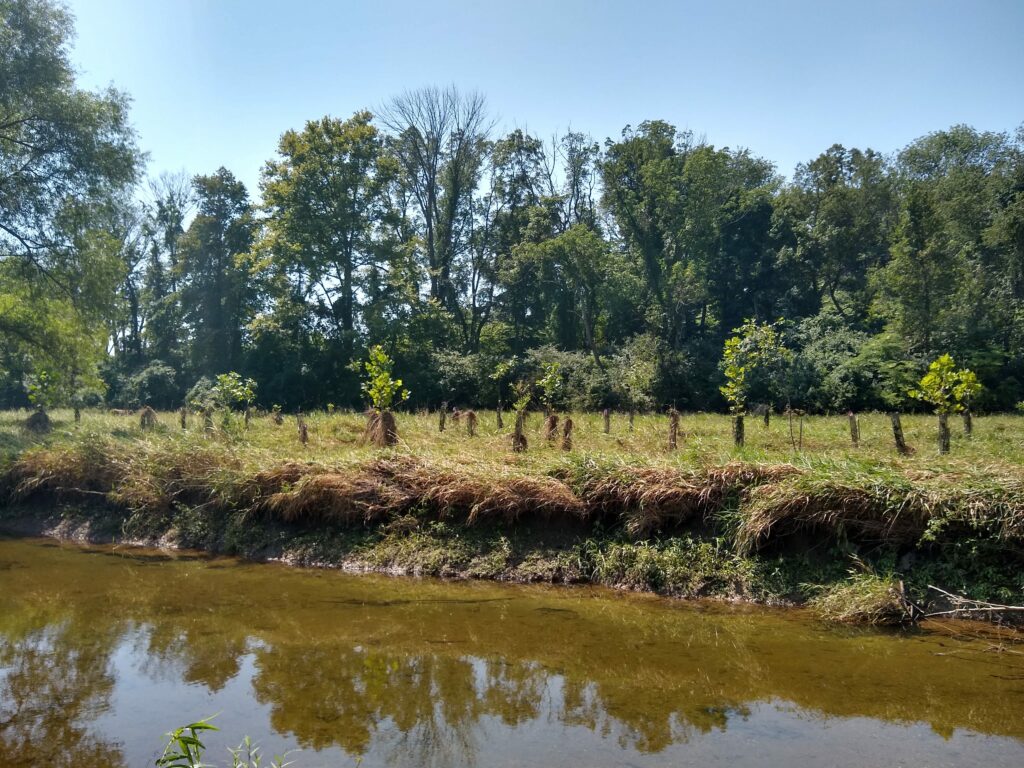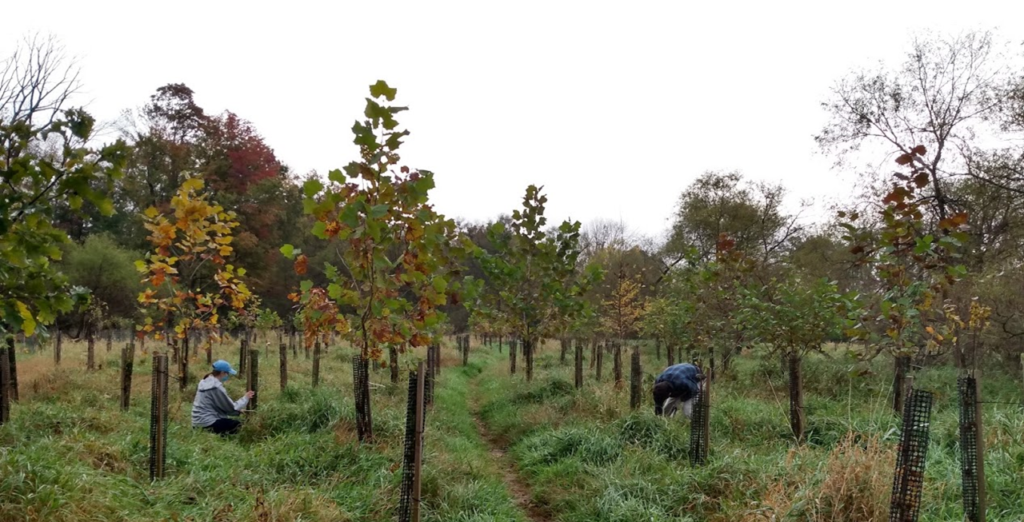
Trees that grow along waterways play a critical role in maintaining a healthy stream or river. Trees provide a huge list of benefits: from providing habitat and food to stabilizing banks and cleaning the water – trees do it all.
The Riparian Zone is the area of land that borders a waterway. This zone is very important for maintaining the health of the stream, and the trees and plants that grow in this area play a critical role in the function of a stream. Riparian trees provide a huge list of benefits: they shade the water to keep it cool, provide food and habitat, stabilize the banks of the stream and filter water to remove pollutants.
A mature leafed out canopy of a tree provides shade from the direct sunlight and keeps the water cooler. Many of the streams in this area are fed by ground water, which means that in a healthy system the water should be very cold. Cold water holds higher levels of oxygen than warm water, and as the stream water begins to warm up, oxygen levels can quickly decrease to the point that many kinds of stream life can no longer thrive. In many cases, streams can warm to the point that some stream life cannot survive. While many different things can cause a stream to warm up, one of the most obvious is a lack of riparian trees. Direct sunlight on a slow moving stream in the heat of August can rapidly warm the water, but by planting riparian trees this can be avoided.
A healthy riparian zone full of trees also provides food and habitat in the stream. In healthy headwaters or the start of a stream or river, the most important source of food is the leaves and branches that enter the waterway. This is called detritus, and is the foundation of the food pyramid. Major inputs, like the falling leaves in autumn, will feed the ecosystem through the entire winter. The leaves that fall into a stream get caught on rocks and sticks and form leaf packs, which are nutrient rich bonanzas for the stream ecosystem! For this reason, it is important that when replanting riparian areas that native plants are used, as many non-native plants do not have the same nutritional value, and will not be consumed when they enter a waterway. Trees and branches that fall into waterways also provide important cover and hiding places for many stream species. The fry, or baby fish, needs a cover to avoid being eaten by larger animals. In a natural undisturbed stream system, there would be log jams, snags, and loads of leaf packs in a waterway to provide this cover.
The canopy is not the only important part of the tree for our streams – the roots of a plant in a riparian area serve the important purpose of stabilizing the banks and slowing the rate of erosion. Erosion is a natural part of a stream’s life, but the rate of erosion can become a problem. When plants are removed from the banks, there is little to secure the soil and rocks along the edge of the waterway, and as rainfall causes water levels to rise and speed up, the force of the water begins to carry the loose bank downstream. This results in stream banks becoming steep, undercut and unstable, and large deposits occur downstream, which can smother existing stream life. Organisms like mussels can become buried underneath sediment that arrives rapidly from upstream erosion.
This May, the Watershed Protection Team is planting 250 trees at Ashbridge Preserve, and we need your help! Join us from May 23 through May 29 in populating the meadow at Ashbridge Lake with a diverse set of native trees and shrubs. This year, the tree planting is designed to take place over an entire week to allow for multiple small groups to come out and make a difference while staying safe and following COVID safety guidelines. We are doing our best to keep all volunteers safe while improving the habitat along Ridley Creek!
To access this year’s planting, we will need to cross Ridley Creek, so please come prepared in shoes that can get wet and muddy! Please bring your gloves and water bottles to stay hydrated during the planting.
This planting has been made possible by generous funding from the DCNR.


